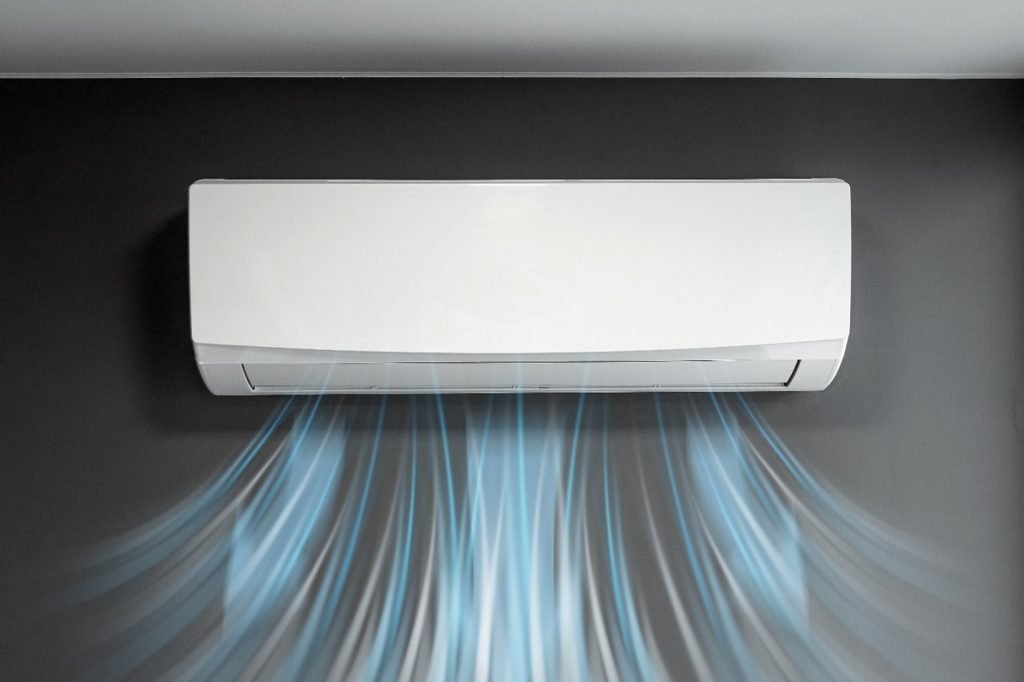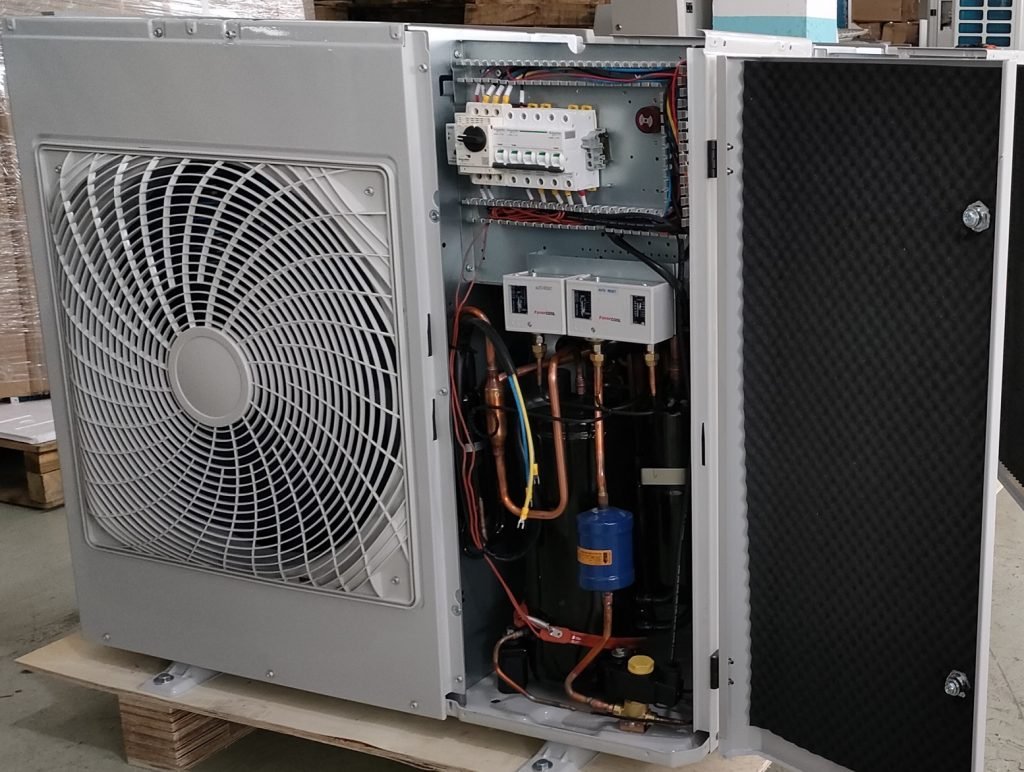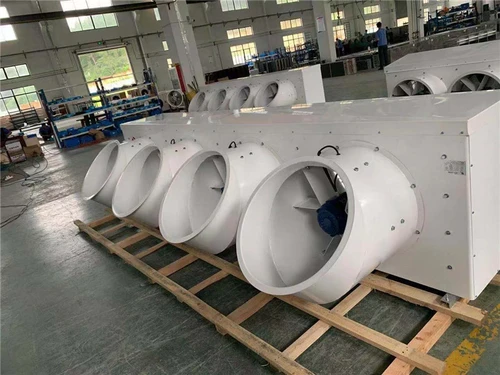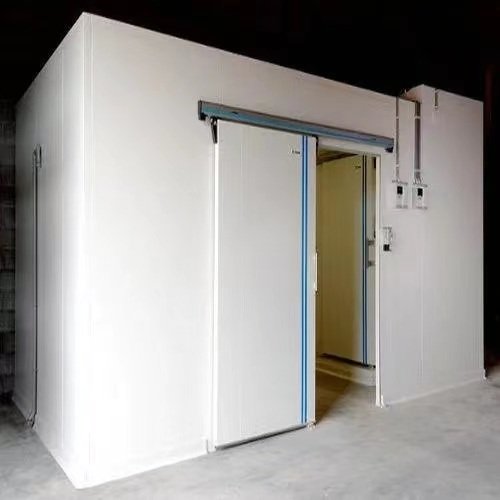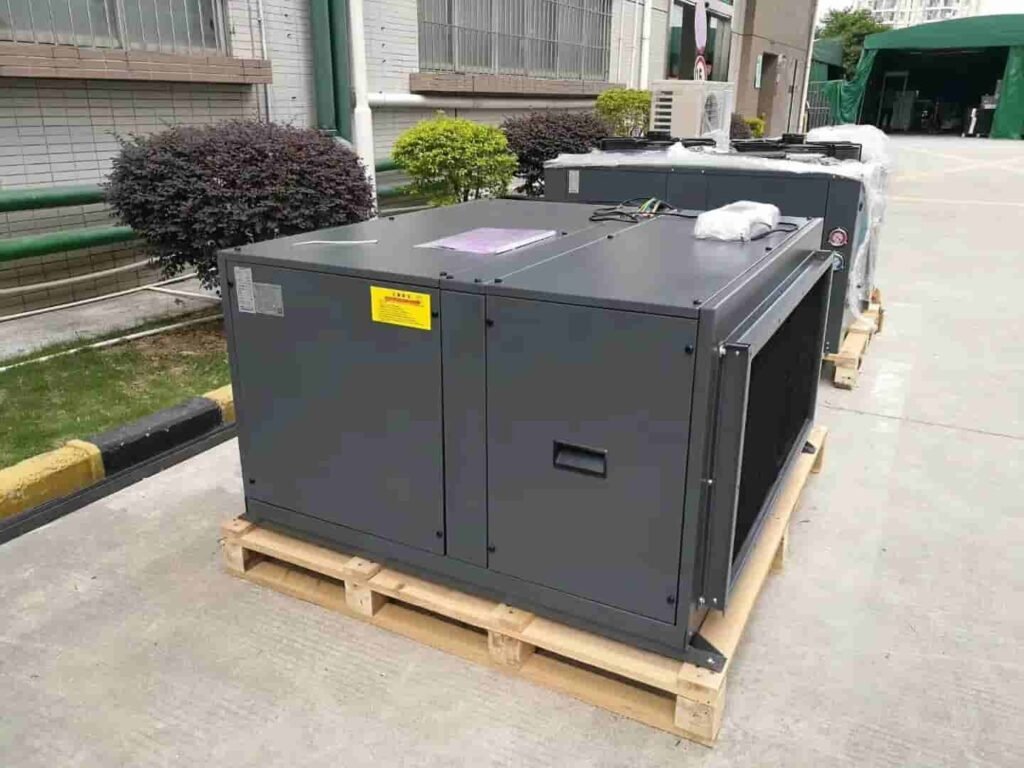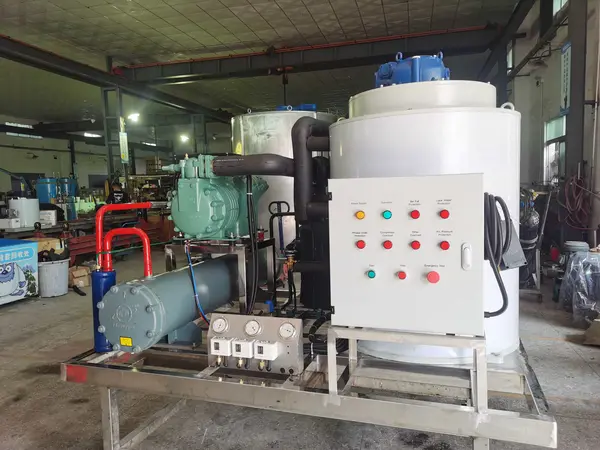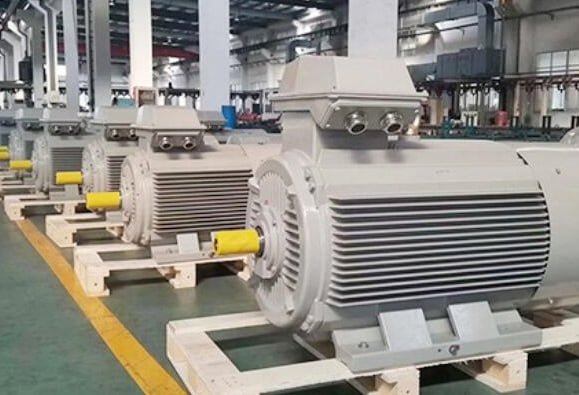スチール構造は、寒い部屋のバックボーンとして機能します, サポート 冷凍システム 維持します 最適な温度 条件.
記事上で, 私たちはあなたの寒い部屋に理想的な鋼構造を選択する方法を探ります, 材料の強度から断熱性の性能まで, 情報に基づいた決定を下すのに役立ちます.
コールドルームスチール構造とは何ですか?
冷蔵室 鋼構造は、寒い部屋の重要なコンポーネントです, 主にフレームワークの構築に使用されます, サポート, コールドルームの負荷をかけるシステム. これらの構造は、寒い部屋の特定の要件を満たす必要があります, 高い断熱性能が含まれています, 強力な負荷容量, そして良好な腐食抵抗, 長期間にわたって低温環境で安定した動作を確保するため.
コールドルームスチール構造の分類
フレーム構造
私. 特徴
フレーム構造は、最も基本的で広く使用されている形です 寒い部屋 鋼構造. その特徴は、主に次の側面に反映されています:
1. 主なコンポーネント
フレーム構造は、鋼の柱で構成されています, スチールビーム, および基礎コネクタ, 空間フレームワークの形成. スチールカラムには垂直荷重があります, 一方、スチールビームは水平荷重をサポートします.
2. 接続方法
コンポーネントは、高強度ボルトまたは溶接で接続されています. ボルト接続は、アセンブリと分解に便利です, 溶接された接続はより強力です.
3. 柔軟性
フレーム構造は、設計の柔軟性が高いです, さまざまな建物エリアと内部レイアウトに合わせて、柱とビームスパンの間隔を調整できるように.
4. シンプルな構造
フレーム構造の構造プロセスは簡単です, 成熟したプロセスと速い建設速度で, 中規模のコールドルームプロジェクトに最適になります.
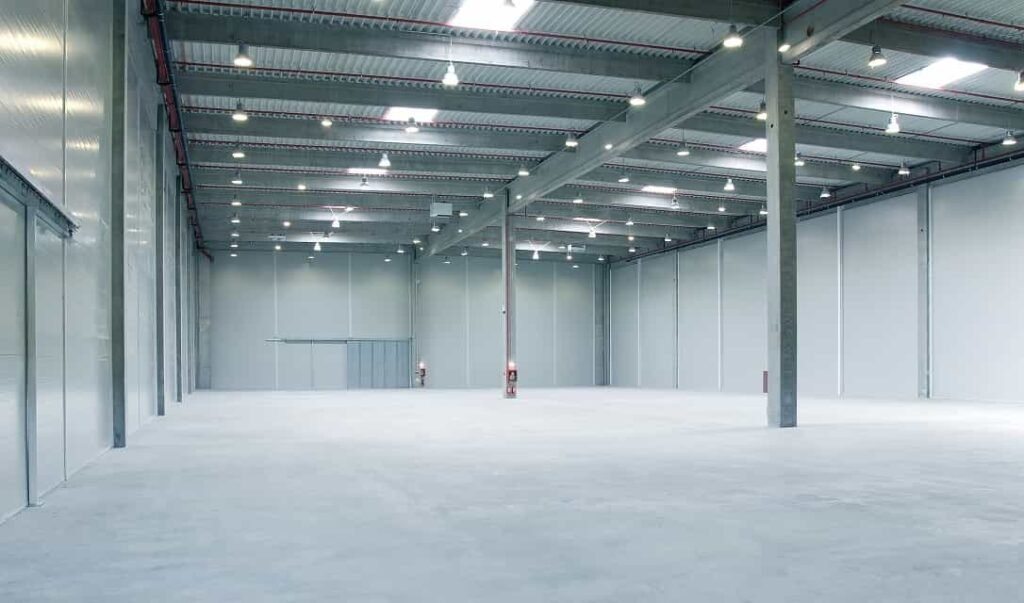
5. 地震のパフォーマンス
その合理的な力の設計により, フレーム構造は、特定の制限内で良好な地震抵抗を持っています, これは、地震のリスクが低い地域に適しています.
6. 材料コストが低い
フレーム構造は少量の鋼を使用します, 材料コストの削減. 軽量の断熱材とペアになった場合, ポリウレタンボードなど, さらに全体的なコストを節約できます.
ii. 短所
1. 限られたスパン
フレーム構造の負荷容量は限られています, 中から小型のスパンコールドルームに適しています (20〜30メートル以内のものなど). 大スパン用 寒い部屋, 追加の中間サポート列が必要でした, 内部スペースの利用に影響を与える可能性があります.
2. 制限された風力抵抗
強風抵抗要件がある地域で (沿岸地域など), 追加の強化コンポーネントが必要です, コストが増加します.
3. 断熱層の制限
フレーム構造に外部断熱層を追加する必要があります, しかし、多数のジョイントのため, すべての角を断熱材で完全に覆うことは難しいかもしれません, 熱損失またはコールドブリッジにつながります.
4. より弱い腐食抵抗
フレーム構造が長期間湿った環境にさらされている場合 (例えば, 海の貨物船では、寒い部屋または熱帯地域), 鋼は錆びる可能性があります, 頻繁な腐食保護が必要であり、運用コストを追加します.
iii. アプリケーション
フレーム構造, 費用対効果のため, 建設の容易さ, そして柔軟性, 次の種類の寒い部屋で広く使用されています:
1. 食品加工コールドルーム
小規模から中規模の食品加工会社に適しています。半フィニッシュまたは完成品を保管する. コールドルームエリアの範囲は500〜3000m2です (平方メートル), そして、フレーム構造は、建設コストを制御しながら空間要件を満たすことができます.
2. スーパーマーケットのコールドチェーンルーム
スーパーマーケットとコンビニエンスストアは、低コストを建設する必要があります, 小規模 冷蔵施設 野菜などの短期商品を保管する, 果物, 乳製品, 等. フレーム構造の迅速な構造と費用対効果は、それらを好む選択にします.
3. 医薬品および医療のコールドルーム
医薬品の部屋には厳密な温度制御が必要ですが、大規模な必要はありません 寒い部屋 エリア. フレーム構造は、ストレージ要件を満たすために柔軟に設計できます.
4. コミュニティコールドルーム
コミュニティグループの購入と新鮮な製品配信の開発により, 小さなコミュニティのコールドルームの需要は増加しています. フレーム構造は、地元のユーザーに会うためにそのような施設を迅速に構築できます’ コールドチェーンストレージのニーズ.
5. 農産物のコールドルーム
フレーム構造コールドルームは、短期貯蔵および果物の予備的な冷蔵のための農民協同組合または地元の農産物加工プラントに最適です, 野菜, 肉, その他の農産物, サプライチェーンの効率を改善するのに役立ちます.
トラス構造
私. 特徴
トラス構造は一連のロッドで構成されています (通常は鋼) 三角形のフレームに配置されています. これらのコンポーネントの調整を通じて強力な負荷をかける容量を達成し、大きなスパンと重い負荷を備えた寒い部屋で使用されます.
1. 構造形式
トラスは複数のロッドで構成されています, ジョイントで接続されて、安定した三角形構造を形成します. 一般的なタイプには、飛行機トラスとスペーストラスが含まれます, そして、デザインはロッドの角度と数を変更することで調整できます.
2. 負荷特性
トラス構造は、接続ポイント全体に負荷を分配します. 各ロッドは、主に力を曲げるのではなく、緊張または圧縮力を負担します, 材料の使用量を削減します.
3. 大きなスパンデザイン
トラス構造は、特に大規模な建物に適しています, 遠距離にわたる効果的なサポートを提供し、内部空間職業を減らす. 通常、スパンに30メートルに使用されます.
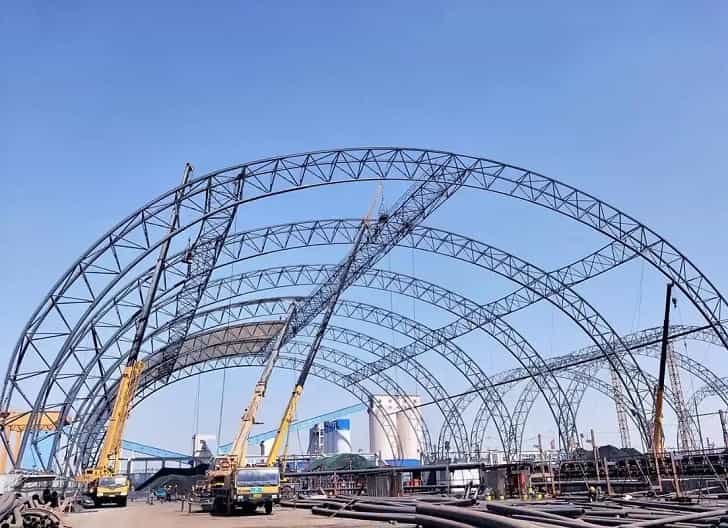
4. 軽量
負荷がロッド全体に分布しているため, 設計で軽い材料を使用して、同じ負荷をかける容量を達成できます, 全体的な構造を軽くし、建設コストを削減するのに役立ちます.
5. 強い安定性
トラス構造の三角形の形はそれを非常に安定させます, そして、それは地震や強風中に力をよりよく分配できます, 変形や損傷のリスクを減らす.
6. 高いスペース利用
トラス構造は、大きなスパンをサポートできます, 内部スペースを最大限に活用し、内部サポート列の数を減らすことができます, ストレージの柔軟性とより広い通路の向上.
ii. 短所
1. 高い建設要件
トラス構造の設計と構築には、高度な技術的スキルが必要です, 正確な計算, そしてプロの建設チーム. 建設品質の制御が不十分な場合、構造的不安定性につながる可能性があります.
2. 小さな寒い部屋には適していません
小さい 寒い部屋 プロジェクト, トラス構造は、設計と生産コストが高いため、理想的ではない場合があります, フレーム構造と比較して、それらを費用対効果を低下させます.
3. 複雑なジョイントデザイン
トラス構造のジョイントは複雑で、正確な計算と製造が必要です. 溶接またはボルトの接続が適切に行われていない場合, 構造全体の安定性を損なうでしょう.
4. 輸送の問題
大型トラスコンポーネントには、特別な輸送機器とより長い輸送時間が必要です. 複雑な地理または貧弱な輸送条件のある地域, これにより、輸送コストが増加する可能性があります.
iii. アプリケーション
彼らの優れた大スパン負荷を含む容量と効率的なスペースの利用により, トラス構造は、次の寒い部屋や関連産業で広く使用されています:
1. 大規模なコールドチェーンロジスティクスセンター
トラス構造は、大規模なコールドチェーンロジスティクスセンターに最適です, ソートセンター, および保管施設. 大きな, 遮るもののない設計により、効率的な部屋と商品の輸送が促進されます.
2. 農産物のコールドルーム
トラス構造は、バルク農産物の保管に適しています (果物など, 野菜, 肉, 等), 特にハイエンドの農産物貯蔵用, 大量のストレージニーズを満たすために、大きなストレージスペースを提供します.
3. 超大型フリーザールーム
超大型冷凍庫, 冷凍魚の保管に使用されるものなど, 肉, または他の冷凍製品, 大規模なデザインが必要です. トラス構造は、十分なサポートを提供し、スペース効率を最大化します.
4. コールドルーム工場
生産と保管が同時に発生するコールドルームの工場では, 冷蔵領域と処理エリアの間に大きなスパンが必要です. トラス構造は、そのようなシナリオでは、生産機器や棚の手配を効果的にサポートできるため、特に適しています.
5. カスタムハイエンドコールドルームプロジェクト
ハイエンドのカスタム用 寒い部屋, 医薬品ストレージや特別な製品ストレージなど, 広々とした安定したインテリアが必要です. トラス構造は、これらの特定のニーズを満たすことができます.
グリッド構造
私. 特徴
グリッド構造は、インターレースされたロッドのネットワークを介して荷重を転送する空間構造形式です, 安定した力システムの作成. 彼らは一般的に大規模な建物で使用されています, コールドルームを含む, 倉庫, 展示ホール,等.
1. 空間構造
グリッド構造は、ネットワークを形成する織り込まれたロッドで構成されています. これらは、平面グリッドまたは3次元グリッドです. ロッドの空間配置は、均一な負荷分布と安定性の向上を提供します.
2. サポートシステム
グリッド構造は、重量と負荷を効率的に分散します, 全体的な安定性を確保しました. 負荷は主にロッド内の張力と圧縮によって処理されます, 力を曲げるのではなく, 高い構造効率と材料利用につながります.
3. 大スパンデザイン
大きなスパンと長距離空間設計に最適です, グリッド構造は、複数の内部柱を必要とせずに安定性とサポートを維持します. これにより、使用可能なスペースが最大化されます.
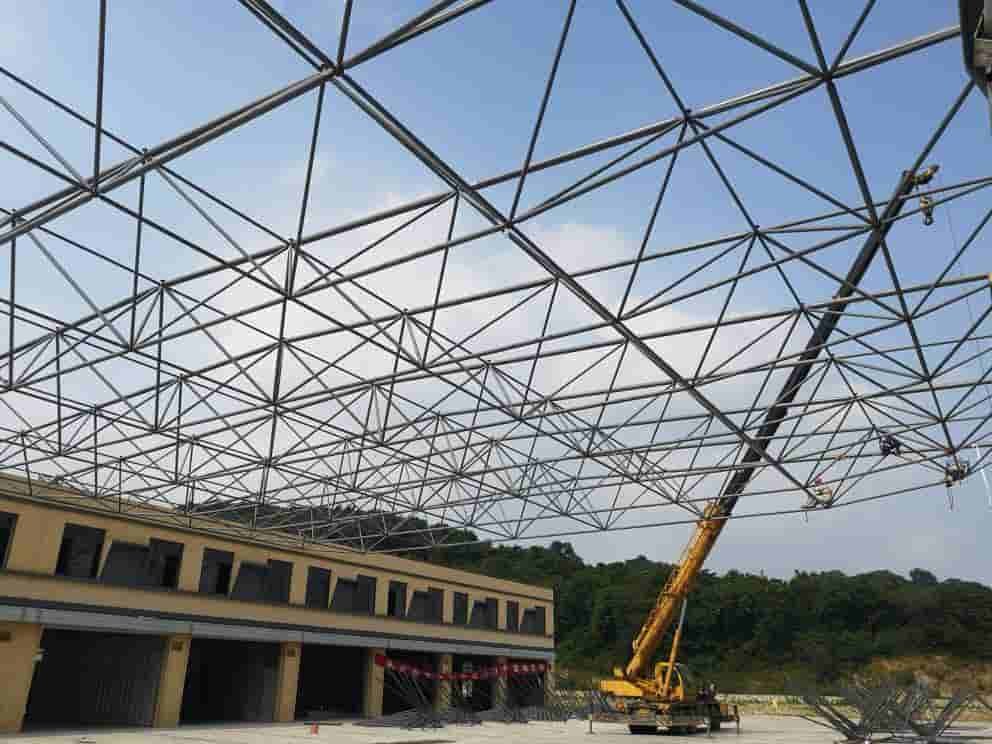
4. 軽量と高強度
最適な幾何学的形状と効率的な負荷伝達メカニズムの組み合わせにより、グリッド構造は、高い負荷を負担しながら最小限の材料を使用できます。. これにより、建設コストと鉄鋼の使用が削減されます.
5. 柔軟な構造
グリッド構造は、オフサイトで部分的または完全にプレハブにすることができます, 迅速かつ効率的なオンサイトアセンブリを確保します. 寸法と接続を調整する柔軟性は、構造のタイムラインをさらに短縮し、適応性を向上させる.
ii. 短所
1. 複雑な設計と構造
グリッド構造には、各ロッドの力の正確な計算が必要です. それらの接続は複雑であり、高精度の製造を需要があります. この複雑さにより、設計コストと建設コストの両方が増加します.
2. 交通チャレンジ
プレハブコンポーネントはしばしば大きく、特別な輸送機器が必要です. これにより、コストがエスカレートする可能性があります, 特に、地理的または物流的条件が困難な地域で.
3. メンテナンスコストが高い
グリッド構造の接続, 通常、特殊なボルトで溶接または固定されています, 細心のメンテナンスが必要です. 修理, 特に損傷したノードの場合, 時間がかかり、費用がかかる場合があります.
4. 熟練した労働力の要件
グリッド構造の構築には、高度な技術的専門知識を持つチームが必要です. 経験の浅い労働者は、建設中にエラーを引き起こす可能性があります, 安全リスクまたは侵害された構造的完全性につながります.
iii. アプリケーション
グリッド構造は、大型スパン機能により、寒い部屋や関連するフィールドで広く使用されています, 軽量デザイン, 効率的なスペース使用率.
1. 冷凍フードルーム設備
冷凍食品を保管する大容量の冷たい部屋用, グリッド構造は、効率的なストレージおよび物流操作に対応するために必要なサポートとスペースを提供します.
2. 高標準の医薬品寒冷室
製薬業界で, 寒い部屋 厳密な温度と湿度の要件を満たす必要があります. グリッド構造は、このような特別なアプリケーションに必要な安定性とスペースを提供します, 高い基準へのコンプライアンスを確保する.
3. 大きなコールドウェアハウスとコールドチェーンロジスティクスセンター
グリッド構造は、巨大な寒い部屋に最適です, 冷凍肉のようなもの, シーフード, または他のバルク商品. 広大なスペースを提供し、高効率温度制御を確保します.
寒い部屋に最適な鋼構造?
断熱材などの要因を考慮してください, 負荷容量, コスト, グリッド構造 内部柱のない大きなスパンをサポートし、使用可能なスペースを最大化する能力により、大規模な寒い部屋に最適です。. 中から小型の寒い部屋用, フレーム構造 より費用対効果が高く柔軟です.
熱断熱性能を最適化する, 鋼構造は、高効率の絶縁材料と組み合わせる必要があります, ポリウレタンサンドイッチパネルなど, スプレー塗布の断熱層, または真空断熱パネル. これらの材料はエネルギー効率を確保し、長期的に運用コストを削減します.
コールドルームスチール構造の設置
寒い部屋に鉄骨構造の設置は、建設プロセス全体の重要な部分です. 構造の安定性を確保するために、仕様を設計するための正確な順守が必要です, 安全性, 効率的な冷蔵パフォーマンス. 以下は、鋼構造の設置における重要な手順と考慮事項の概要を示しています 寒い部屋:
私. インストール前の準備
スチール構造の設置を開始する前に, スムーズで成功したプロセスを確保するためには、徹底的な準備が必要です:
1. 物質検査と受け入れ
–インストール前, すべてのスチールコンポーネントは、徹底的に検査および受け入れなければなりません. すべての部品が品質基準を満たしていることを確認してください, 寸法は設計仕様に合わせます, 材料には腐食などの欠陥がありません, 変形, または損傷.
–鋼の表面上の耐食性コーティングの完全性に特に注意を払ってください, 欠陥は全体的な設置品質に影響を与える可能性があるためです.
2. サイトのクリーニングと準備
–インストールサイトをクリアして平準化する必要があります。. 不均一な地面は、アセンブリ中に不安定性または不整合を引き起こす可能性があります.
–建設中に危険なエリアへの不正アクセスを防ぐために、フェンシングと警告サインを備えた安全境界線を確立する.
3. 人員と機器の準備
–すべてのインストール担当者が必要な資格と経験を持ち、インストール手順に精通していることを確認してください.
–労働者は、開始する前に安全訓練を受ける必要があります.
–すべての機器, クレーンを含む, ホイスト, および接続ツール, 彼らが良好な状態にあることを確認するために事前にチェックする必要があります.
ii. 基礎とアンカーボルトの設置
基礎とアンカーボルトは、コールドルーム全体の鋼構造全体をサポートするために重要です. したがって, 財団の品質は、インストールの安定性と長期的なパフォーマンスに直接影響します.
1. 基礎構造
–基礎は掘削され、コンクリートをデザインの図面に従って注ぐ必要があります. 深さ, 幅, 財団の形状は設計仕様を満たさなければなりません.
–財団の建設が始まる前に, 土壌のベアリング能力を確認し、基礎設計がサイトの条件に適していることを確認するために土壌調査を実施する必要があります.
2. アンカーボルトの取り付け
–アンカーボルトを配置する必要があります, サイズ, 正確に整列しました. 通常, アンカーボルトは、基礎の注入中にコンクリートに埋め込まれています.
–インストール前, レベルやレーザー測定デバイスなどのツールを使用して、アンカーボルト位置を正確に調整する必要があります.
–アンカーボルトは、その後の設置段階での動きを防ぐために、しっかりと固定する必要があります.
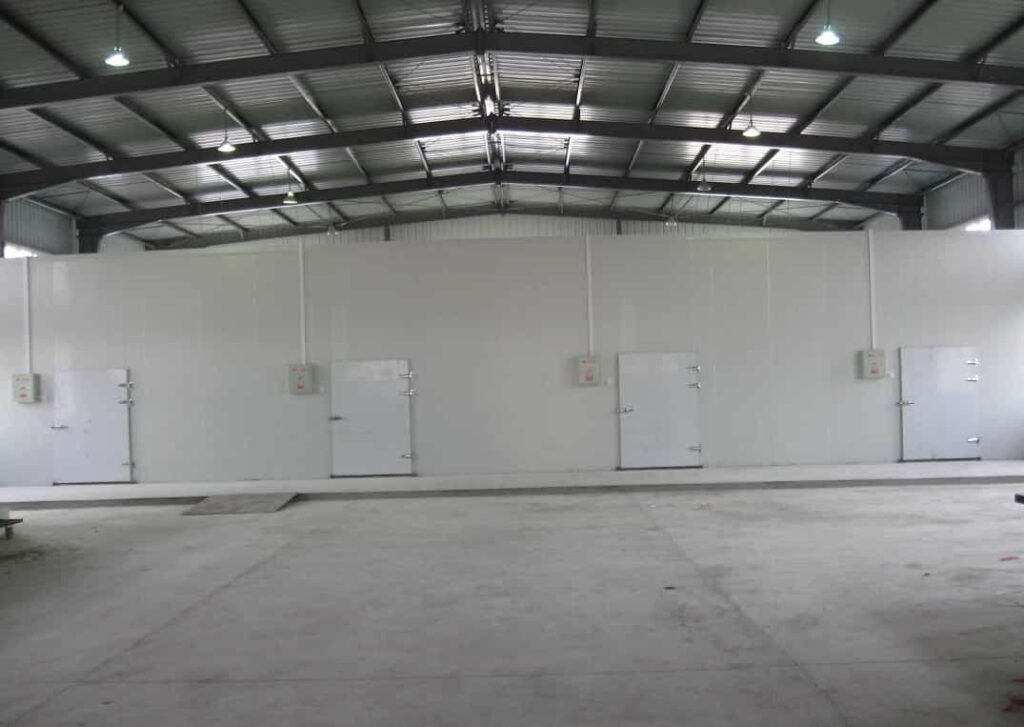
iii. スチールコンポーネントの巻き上げとアセンブリ
鋼構造の主要成分, 列を含む, ビーム, およびフレーム, 指定された位置に巻き上げられ、組み立てて一緒に修正する必要があります.
1. 事前の準備
各コンポーネントは、正しいシーケンスと位置にインストールされていることを確認するためにマークする必要があります. 巻き上げる前, すべてのコンポーネントに欠陥または損傷がないか検査する必要があります.
2. 巻き上げプロセス
–巻き上げ中, スチールワイヤーロープやリフティングストラップなどのツールを使用して、スチールコンポーネントを所定の位置に上げる必要があります, 過負荷やリフティングエラーがないことを確認します.
–傾斜や滑りを避けるために、コンポーネントを注意深く巻き上げなければなりません.
–各スチールコンポーネントが配置されたら, 動きを防ぐために一時的に固定する必要があります. 確保した後, 永続的な接続を行うことができます.
3. アセンブリと接続
–スチールカラムとビームは、ボルトまたは溶接のいずれかを使用して接続されています. ボルト接続は、設置の容易さと柔軟性のために、より一般的に使用されます, 溶接はより強くなりますが, より多くの永続的な関節と、より高い強度を必要とするエリアで使用されています.
–溶接セクションの場合, 高品質の溶接を確保するには、溶接プロセスを厳密に制御することが不可欠です. ボルト張りの接続用, 構造の完全性を確保し、緩めるのを防ぐために、ボルトを適切に締めます.
–アセンブリ後, 各接続ポイントを検査して、安全で正しく配置されていることを確認する必要があります.
IV. サポートと強化
鋼構造の設置中, プロセス全体の構造の安定性と安全性を確保するために、サポートと強化の措置を実装することが重要です.
1. 一時的なサポート
–一時的なサポートは、長いスパンのある大きなコンポーネントと構造にとって特に重要です. インストール中にコンポーネントが傾いたり変形したりするのを防ぐのに役立ちます.
–一時的なサポートは、スチールパイプやアングルスチールなどの材料から作られています. 設置中の障害を防ぐために、サポートの安定性と負荷を負担する能力を確保する必要があります.
2. 恒久的な補強
–インストール後, 全体的な安定性を高めるために、鉄骨構造の重要な領域に追加のサポートメンバーまたは補強リブが必要です, 設計仕様によると.
–これらの強化措置は、設計基準を満たし、厳密な受け入れテストを受ける必要があります.
Ⅴ. 屋根と壁の設置
寒い部屋の屋根と壁は、鋼の構造の外層です. インストール中, 断熱材を確保することが不可欠です, シーリング, これらのコンポーネントの構造安定性.
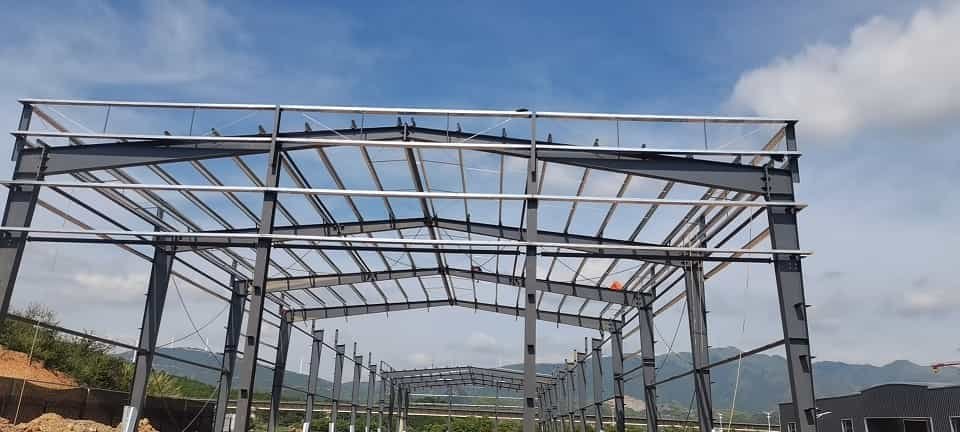
1. 屋根の設置
–通常、屋根の設置には、スチールビームの設置が含まれます, ルーフパネル, および断熱材. 漏れを避けるために屋根のパネルが適切に密閉されていることを確認するために注意する必要があります.
–ルーフパネルと鋼構造の間の接続は、特別なファスナーを使用する必要があります, 各接続ポイントがタイトさをチェックした状態で.
–特別な腐食保護が必要な領域の場合, 要件に従って、適切な腐食防止コーティングを適用する必要があります.
2. 壁の設置
–の壁 寒い部屋 断熱材で作られています, ポリウレタンやロックウールパネルなど.
–インストール中, パネルは、設計仕様に従って正確に測定してインストールする必要があります. パネルは安全に接続する必要があります, 寒い部屋を強化するためにそれらの間の最小限のギャップがあります’ 熱絶縁性能.
vi. 電気および防火の設置
コールドルームの建設には、鋼構造を組み立てるだけでなく、施設の適切な機能と安全性を確保するために、電気および火災安全システムの設置も含まれます.
1. 電気設備
–電気設備には、照明のセットアップが含まれます, 電源システム, 温度および湿度制御システム. 回路の安全性と信頼性を確保するために、設置は電気安全基準に準拠する必要があります.
–配布板, スイッチ, そして、将来のメンテナンスと修理を容易にするために、配線コンジットを戦略的に配置する必要があります.
2. 防火設置
–コールドルームの建物は、厳格な防火規制を満たす必要があります. これには、煙探知器の設置が含まれます, 消火器, およびスプリンクラーシステム.
–インストール中, 防火システムコンポーネント, パイプやスプリンクラーヘッドなど, 幅広いカバレッジを確保するために、設計仕様に従ってレイアウトする必要があります, 緊急事態の場合に火の迅速な抑制を可能にする.
vii. 安全対策と受け入れ
安全は、鋼構造の設置中の最優先事項です, そして、安全基準の順守を確保するために、建設現場を継続的に監視することが不可欠です.
1. 安全保護
–インストール中, 安全ベルトなどの安全対策を使用する必要があります, ガードレール, そして、労働者が高さから落ちるのを防ぐためのセーフティネット.
–不正な職員が危険なエリアに入るのを防ぐために、設置作業ゾーンを明確に定義する必要があります.
2. 受け入れと品質検査
–スチール構造が設置された後, インストールの品質を確認するために厳格な検査を実施する必要があります. これには、接続の緊密性の確認が含まれます, コンポーネントの安定性, 構造のアラインメント.
–すべてのコンポーネントは、関連当局によって検査および承認され、設計仕様と関連する基準を確保する必要があります。 寒い部屋 動作しています.
最も経済的で時間を節約する方法は何ですか?
1. モジュラープレハブ鋼構造
この方法で, すべてのコンポーネントは工場で事前に作成されてから、組み立てのために建設現場に輸送されます. これにより、建設時間と人件費の両方が大幅に削減されます.
2. 効率的な断熱材統合材料
インストールされた断熱層を備えたスチールパネルを使用すると、建設プロセスが簡素化されます, 個別の断熱材の設置の必要性を排除するため. また、このアプローチは材料コストを削減し、全体的なインストールをスピードアップします.
インストール中のその他の考慮事項
私. インストール前のデザインレビューと確認
インストール前, すべてのパラメーターと詳細が実際のニーズと建設条件を満たすことを保証するために、設計計画を徹底的に確認および確認することが重要です.
1. ブループリントレビュー
–鋼構造の設置前, デザインの青写真は、それらの実現可能性を確保するために詳細なレビューを受ける必要があります. 青写真は、スチールコンポーネントサイズなどの仕様をカバーする必要があります, 数量, 接続, およびサポートシステム. 設計と実際の条件の間に矛盾がある場合は、インストールの問題が発生する可能性があります.
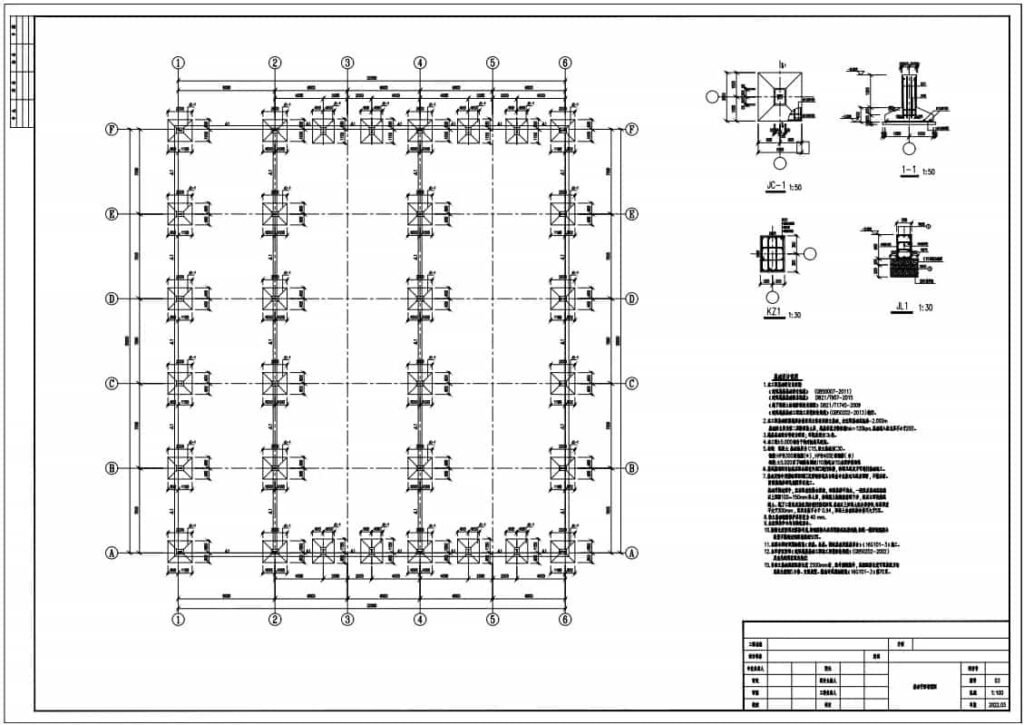
–青写真のすべての詳細が明確に定義されていることを確認してください, 正しいサイズで, 位置, および接続方法, 建設基準に従って.
2. 構造計算の確認
負荷要件を慎重に計算します, 風負荷, 雪の荷重, 等, 必要な鋼の仕様と構造強度を確認します.
取り付け前, 負荷を負担する容量に関連するパラメーターを確認します, 地震のパフォーマンス, そして、風負荷は、設置プロセス中の潜在的な問題を回避するために適切に考慮されています.
ii. 建設環境と天候の影響の適応性
建設の品質と安全性は、設置中の環境および気象条件の影響を大きく影響する可能性があります, これらの要因を綿密に監視することを不可欠にします.
1. 天気モニター
–極端な気象条件 (強風など, 大雨, または雪) 鋼構造の設置の安全性に影響を与える可能性があります. したがって, 天気予報を綿密に監視し、不利な気象条件中の持ち上げや高度の作業を避けることが重要です.
–極端な天候の場合, 嵐など, 労働者の安全を確保するために、すぐに作業を一時停止する必要があります.
2. 鋼への温度効果
スチールの特性は、温度の影響を受ける可能性があります. 寒い気候で, 鋼は脆くなる可能性があります, 高温は変形を引き起こす可能性があります. 建設中, 溶接や高温または高温での切断を避ける必要があります.
温度条件を効果的に管理するために、冬または夏の間にもっと注意を払う, 鋼の品質を確保し、構造的損傷を防ぐために適切な保護対策を講じる必要があります.
結論
コールドルームスチール構造は、コールドルームの建設の重要なコンポーネントです, 寿命に直接影響を与え、寒い部屋の運用効率. 鋼構造の種類を科学的かつ合理的に選択します, インストールプロセスの最適化, 建設の詳細に注意を払うことは、冷蔵パフォーマンスを最大化するだけでなく、コストと時間を節約することもできます.
の専門家向け 寒い部屋 業界, 安全性と品質に焦点を当てることは、プロジェクトの成功を確実にするための鍵です.
コメント?
ようこそメッセージを残すか、再投稿してください.



